There’s a whole category of “music store” that you have likely never stepped foot in…unless you have kids in middle school! The largest such retailer in the U.S. is Music and Arts, which is owned by Guitar Center and has over 250 locations across the country. But even if you don’t have a Music and Arts nearby I promise you your town has a local store just like Music and Arts. These are your “band instrument” stores, where your middle-through-high-schooler can buy—or far more likely rent—a violin or a trumpet or a saxophone or what have you. They also sell sheet music, accessories, a few entry level guitars and keyboards, and…they offer lessons. Instrument rentals and lessons is where these stores make their money—in that order. They probably make more money selling sheet music and instrument accessories—reeds, strings, rosin, etc.—than from selling actual instruments themselves. Rentals and lessons are where the money is.
And as the parent of a child who is set to be a music performance major in college, let me tell you there is a place for these stores! When we finally bought him his own “professional quality” instrument after years of school horns and rental horns, it cost more than a decent used car or any guitar in my collection—not the type of money you want to drop on a sixth grade band student!
One of the forefathers of these music stores were the “music schools” of the 1940’s-1960’s. Much in the vein of today’s “School of Rock”, lessons were the primary money maker in this business model, focused mostly on contemporary “popular music” instruments like the accordion and “Hawaiian guitar”. And selling lessons was easier and more profitable if you had a house brand entry-level instrument to sell to your students along with the lessons.
Rickenbacker had experience providing such instruments to this market dating back to 1948, when they first slapped a “Bronson Melody King” label on the venerable BD-6 lap steel for the Bronson Music School—a customer they would supply until at least 1953. But when F.C. Hall purchased the company in late 1953 he had a new strategy for servicing this market.
I have an article you can read here about the company’s history with branding up to this point—and it was all kinds of a mess! But Hall came in with a clear vision: build and promote the Rickenbacker brand but, in order to not leave any money on the table, use the Electro brand to service the music schools and the student market. Which is why a student level Electro steel guitar and amp combo was one of the first new products Hall launched after he bought the company.
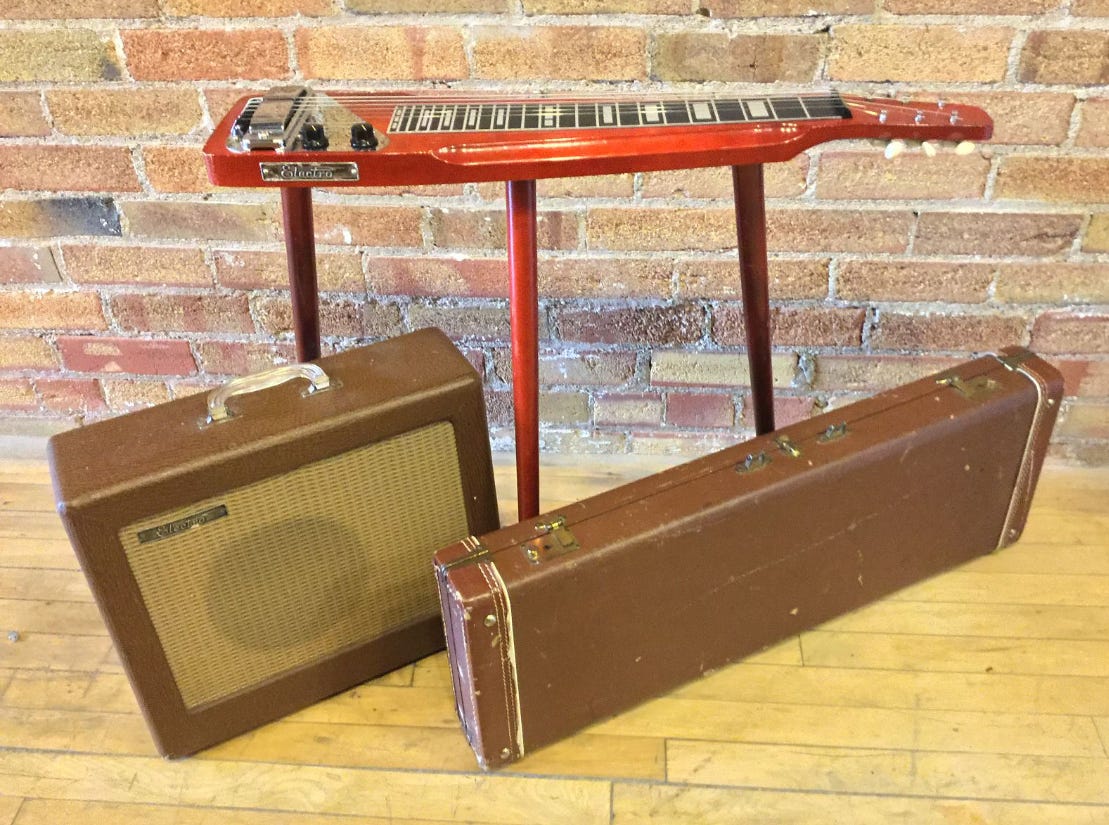
So we have a market for student instruments, and a strategy for servicing it. And as the popularity of electric guitar-based music grew in the late 1950s/early 1960s, it’s no surprise that the music schools followed the money to begin offering electric guitar lessons. And Rickenbacker was ready.
Their first foray into the “private label guitar for music schools” market was with the Contello/Symfonia Grand models, codeveloped with and produced for the Mann Music Schools in 1962.
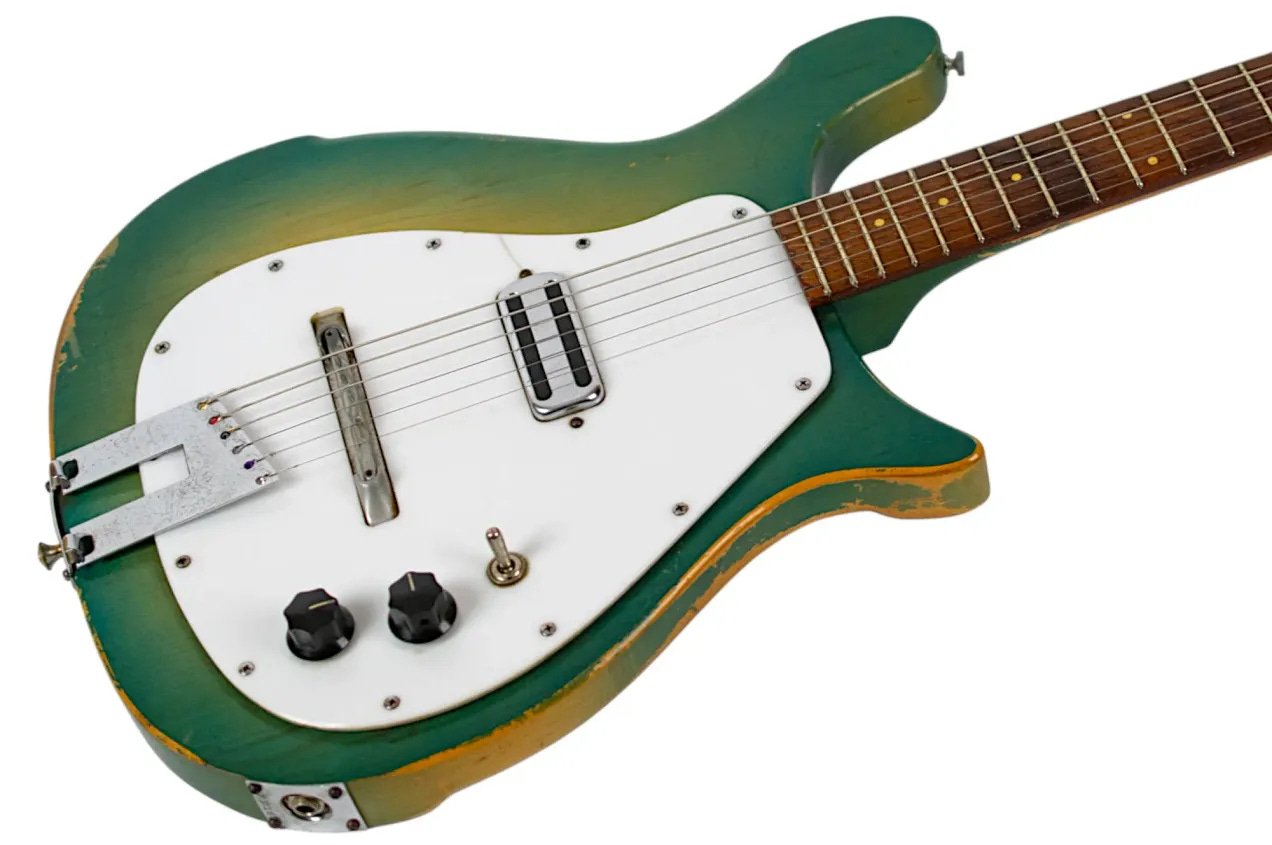
The problem with the Symfonia Grand was that while it was based on the entry-level 425, there was a lot of customization going on there—and customization adds cost. So the strategy was refined: create a model specifically for the market, brand it Electro, and if the customer REALLY wanted their name on it they could have it—but only via a custom truss rod cover. The rest of the guitar would be the same as the “Electro” version. Enter the ES16 and ES17 in 1963.
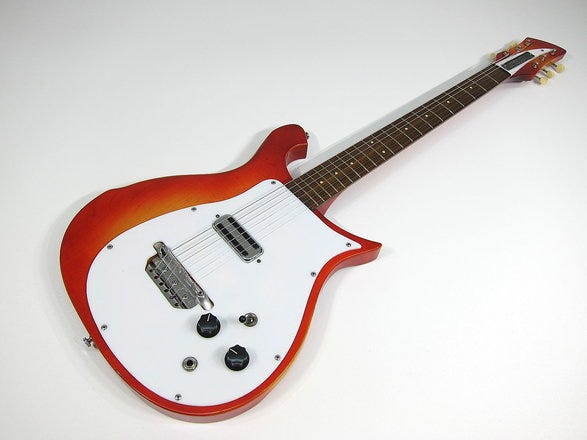
If that Electro ES17 looks a lot like a contemporary 425…that’s because it is a contemporary 425. Just with a different name on the headstock. As a single pickup, “standard” solidbody guitar, the 425 was the least expensive full-scale model in the line and therefore a perfect donor candidate for a private label student guitar.
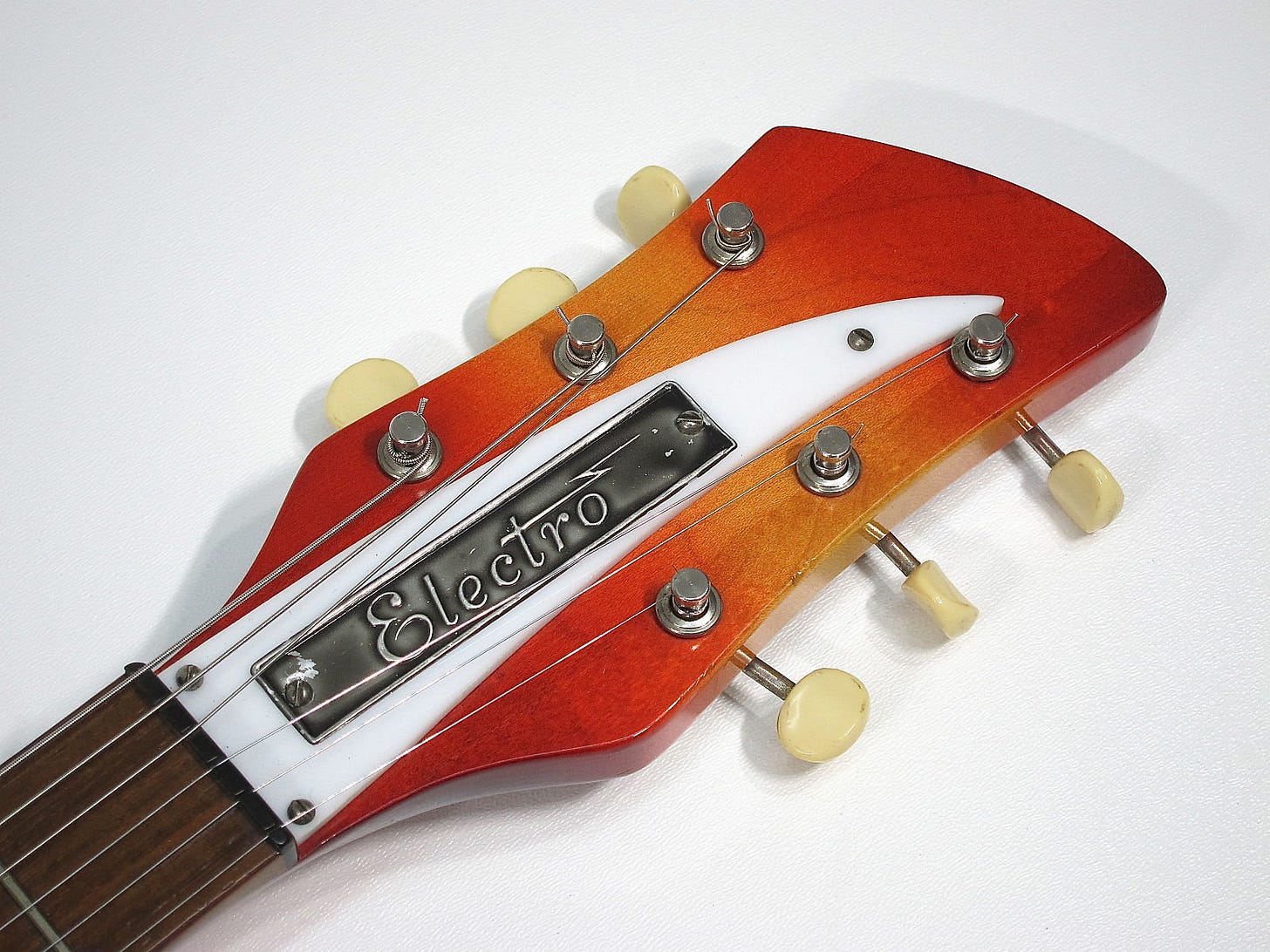
In true thrifty Rickenbacker fashion, at its launch in early 1963 the ES17’s truss rod cover was the traditional Rickenbacker shape, but made from the same material as the pickguard with the Electro nameplate used on amps and steel guitars simply screwed to it.
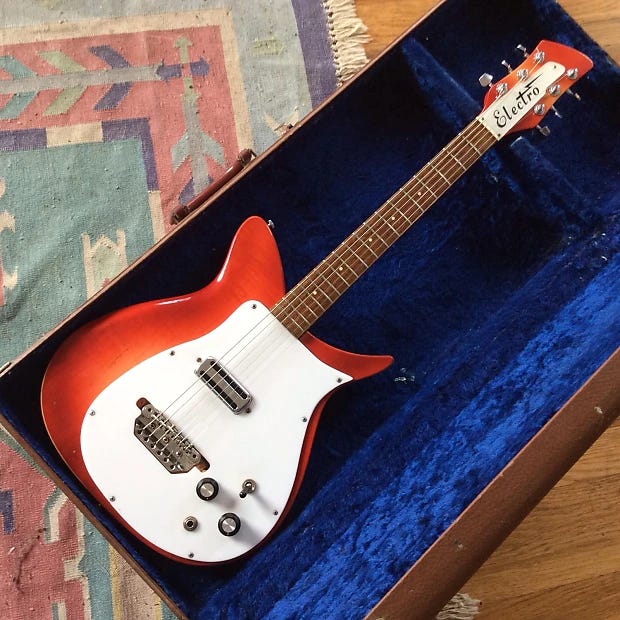
In the true spirit of the “student” guitar, there was a short-scale option as well. Just like the ES17, the ES16 simply took an existing model—the 1000 in this case—and stuck a funny truss rod cover on it.
And you may notice the truss rod cover on this one IS actually funny—it’s not just the slapped-together job we saw earlier on the ES17. But it didn’t just spring to life fully formed—there was an evolution.
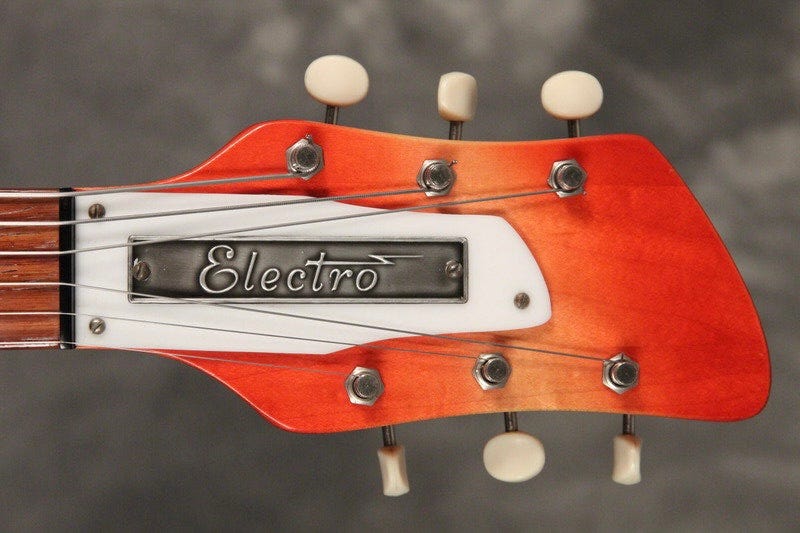
The first ES16 truss rod covers followed the ES17 philosophy—slap the existing Electro nameplate onto a truss rod cover made from the same material as the pickguard—but it didn’t use the standard Rickenbacker shape. Why not? Because for that first production batch they actually had orders in hand from the Ryder Music School, who wanted THEIR name on the headstock.
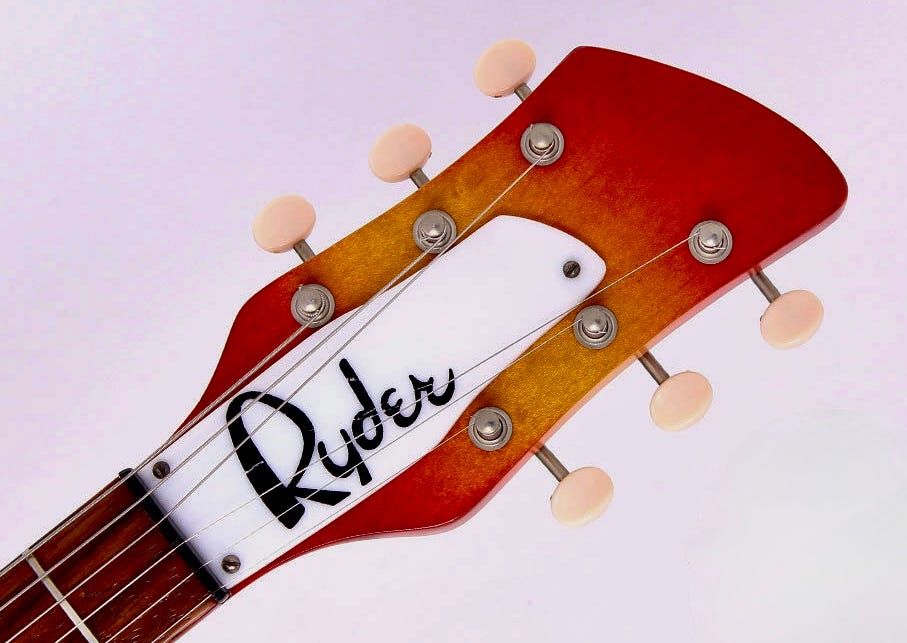
No way to make that logo fit legibly on the Rickenbacker truss rod cover—nor would you want to if you were trying to protect your premium brand. So Ryder got their name silk-screened onto the truss rod cover—the only customization available, remember—and the Electro “house” brand continued using the screwed on nameplate—but the same truss rod cover shape. As an aside, amps sold to Ryder maintained the Electro branding—they did not get a Ryder nameplate.
I’m not sure why they didn’t use the same truss rod cover on the ES17. While Ryder did order ES17s later in the year—which got the same truss rod covers as the ES16–Electro versions of the ES17 continued to use the “Rickenbacker shape” truss rod cover until 1965.
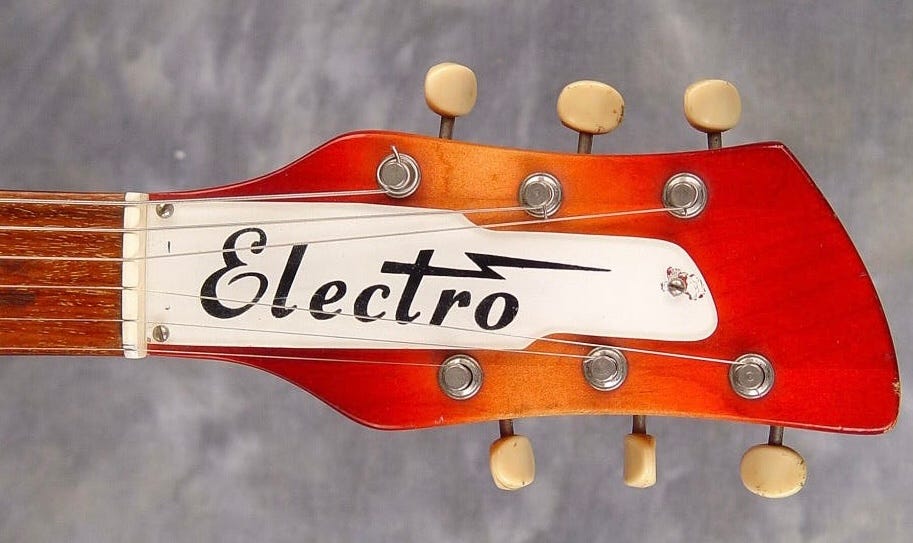
In early 1965 Electro finally got a proper truss rod cover. A lengthened version of the Ryder/ES16 shape, this truss rod cover would be made of clear plexiglass, with the Electro logo and white background backpainted just like the stock Rickenbacker cover. This version would last until the models were dropped from production.
There’s another “brand identity” detail—and it was a cost savings detail to boot!—that I’ve already shown you a couple times that you may not have picked up on. You can read all about guitar cases here, but the important part of the timeline covered there is that in 1962/63 the exterior of Rickenbacker guitar cases (and amplifiers!) transitioned from the so-called “elephant” gray Rexine to silver Tolex. The Electro products utilized brown Rexine covering—a less expensive (and less durable) option. Again, this would last until production ended on these models—even after the silver Tolex Rickenbacker cases had transitioned to black Tolex.
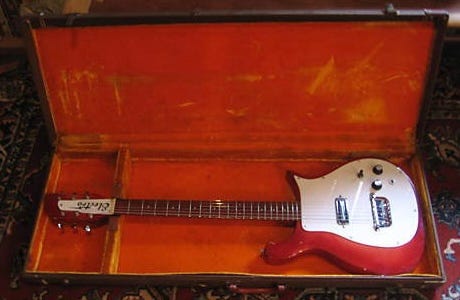
The models saw some evolution over their run apart from the truss rod cover, most notably in mid to late 1965 when construction on both changed from neck-through construction to set neck.
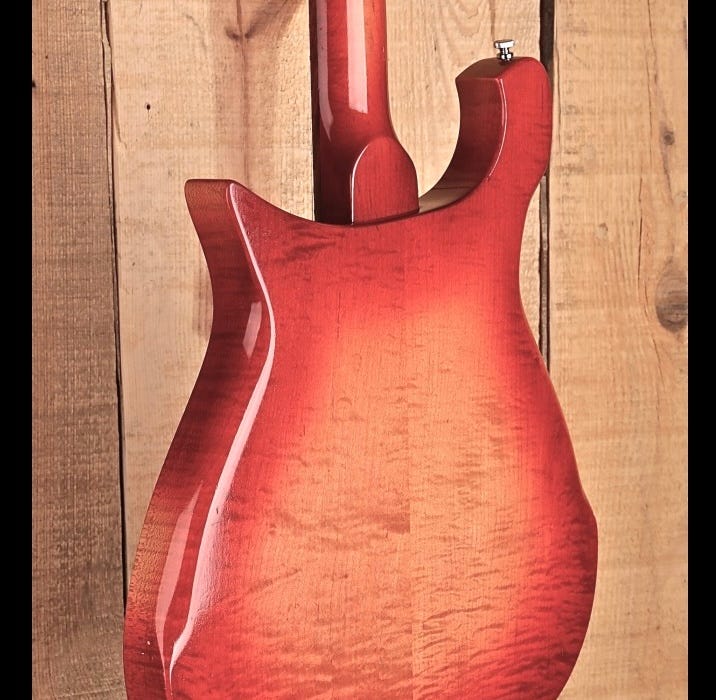
Neck-through construction is expensive, set neck less so. That would make sense in this context…except the “donor” 420 and 1000 both got the same set neck. So it wasn’t a “special” thing for the ES16 and ES17, but it was clearly an exercise in removing cost from their most basic entry-level guitars—regardless of the brand name that ended up on the headstock.
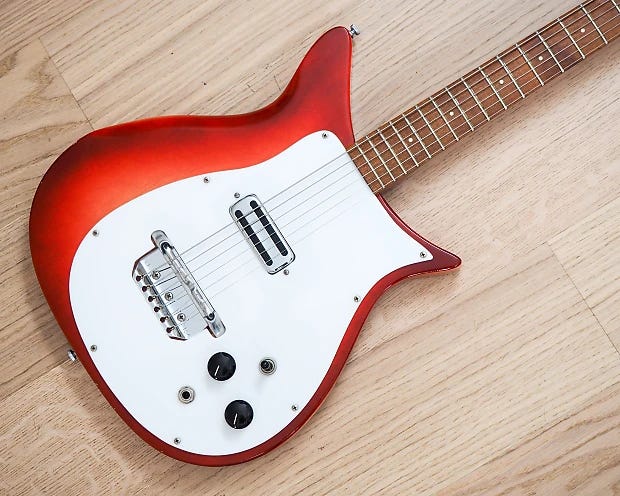
At the same time the ES16 got a set neck, it also (along with the 1000) got a new double cutaway body. This would be the third and final body for the 1000, removing all traces of the original “tulip” design.
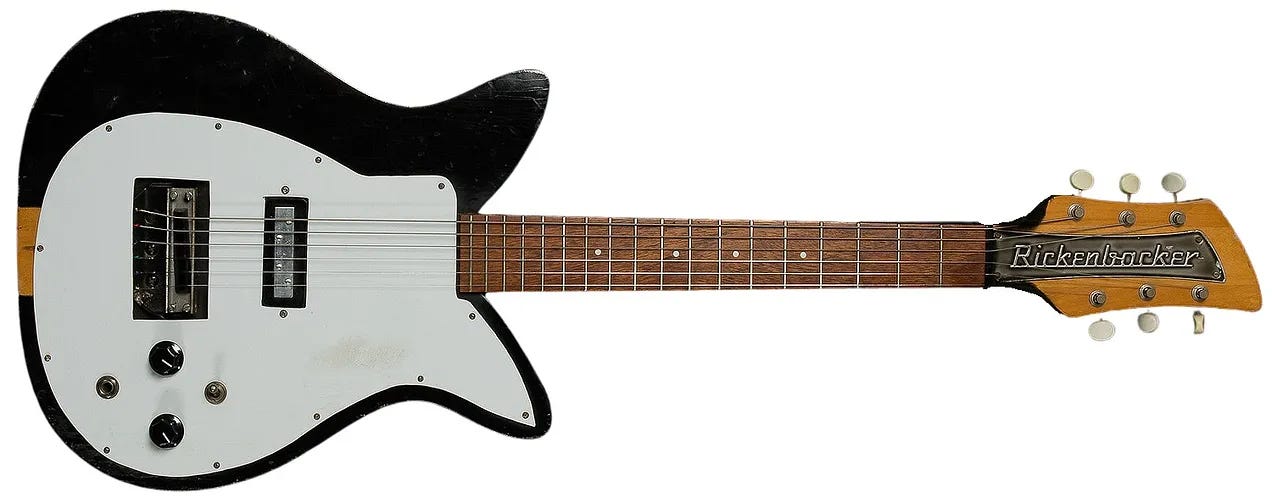
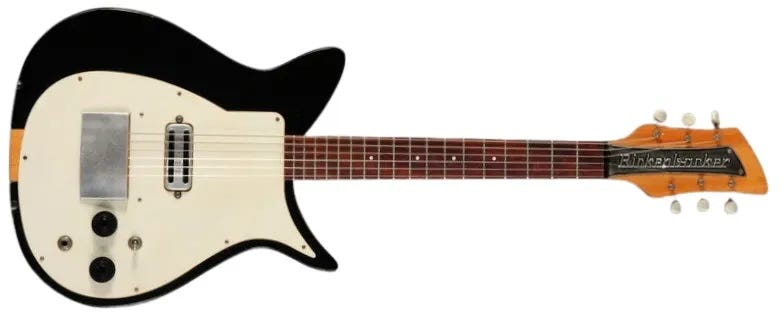
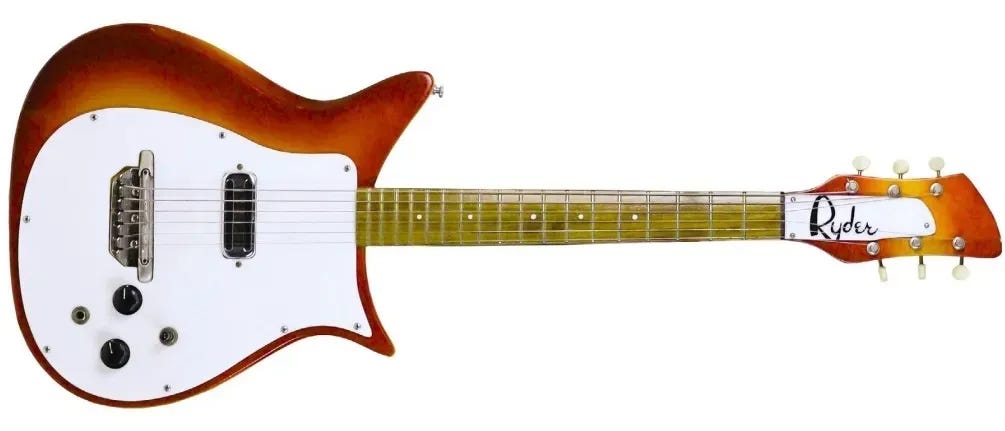
A more minor change had happened to the earlier “half-tulip” design in late 1963, when the body moved from a slab to semi-contoured.
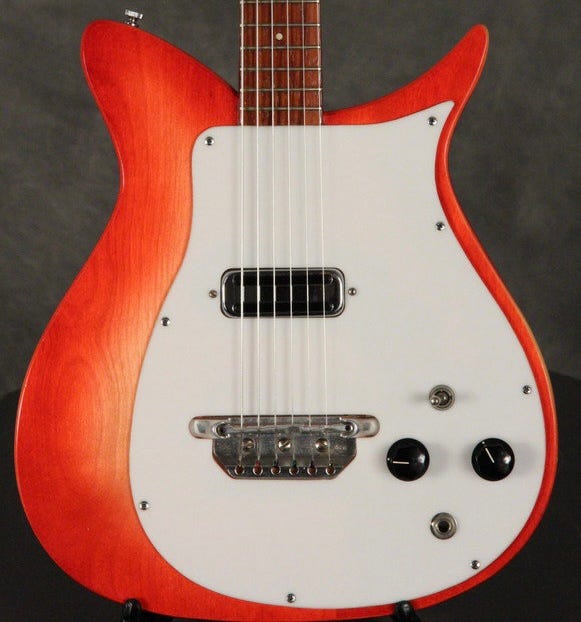
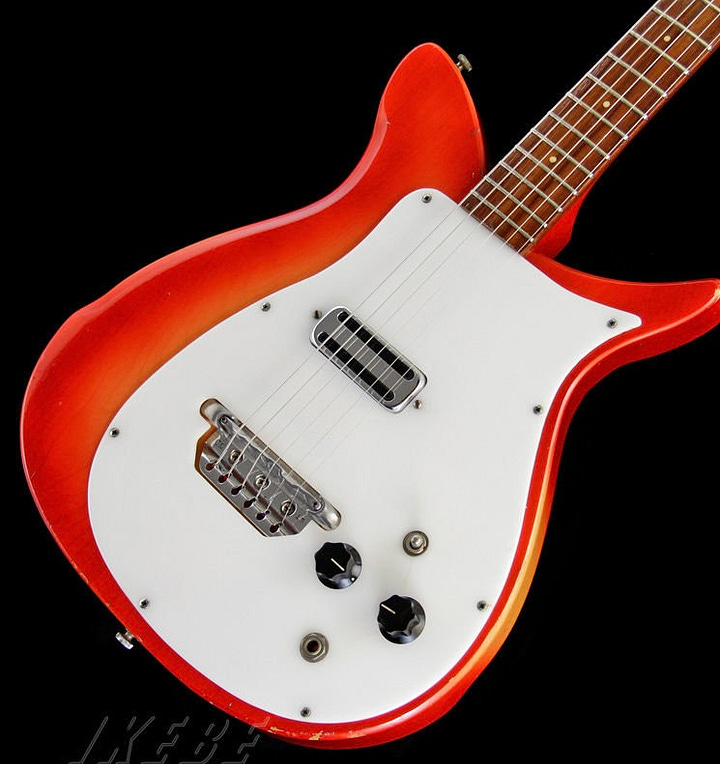
One last little change you might have picked up from the pictures isn’t a change…it’s replaced parts. Although most of the line began moving from the old black fluted “KK” knobs to the silver top knobs in mid 1965, the ES16 and ES17 never did. If you see silver top knobs on one of these—like you will in a couple pictures above—they’ve been replaced. With one key exception we’ll talk about in a minute.
The ES16 and ES17 were never officially on a price list or catalog, so it’s hard to know when they “officially” disappeared. We can say that the last known ES16 (and 1000!) dates to 1967, and the last known ES17 dates to 1972. Ryder ended up being the only customer to request their own brand, so Electros far outnumber Ryders today. But by 1972 the era of student guitars was officially over.
There is postscript to this story, though. In 1983 there was a small run of Electro ES16s…with contemporary features like a button top Higain pickup, Grover Rotomatic tuners, and—wait for it—silver top knobs.
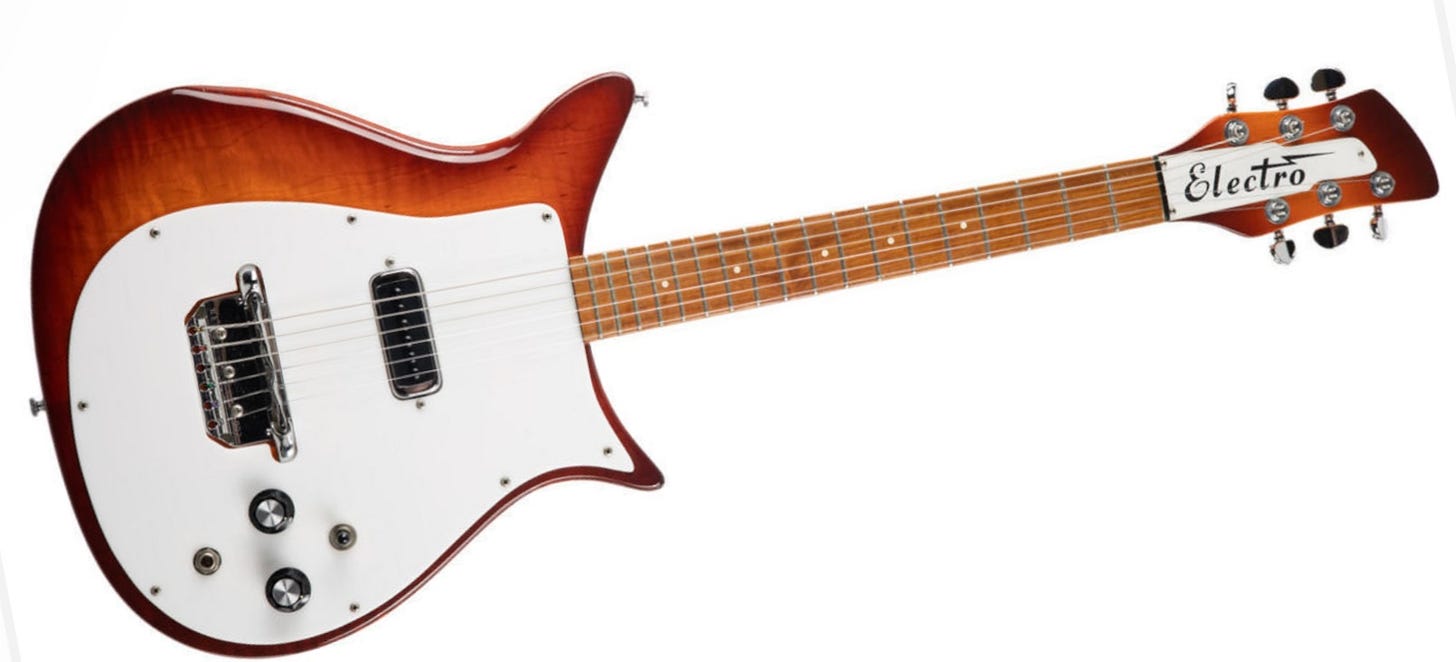
Why? You got me. The prevailing wisdom is that there were a bunch of leftover bodies from 1967 that “somebody” decided to finish up and get out of the warehouse. Remember that this was before the days of dealer custom runs or reissue guitars—and under F.C. Hall Rickenbacker never threw ANYTHING away. If I apply Occam’s razor, this theory holds up!
Want to learn more about…everything else? Check out our handy site map to see what we’ve already covered. Got something you’d like to see covered? Drop it in the comments and we’ll add it to the queue.

